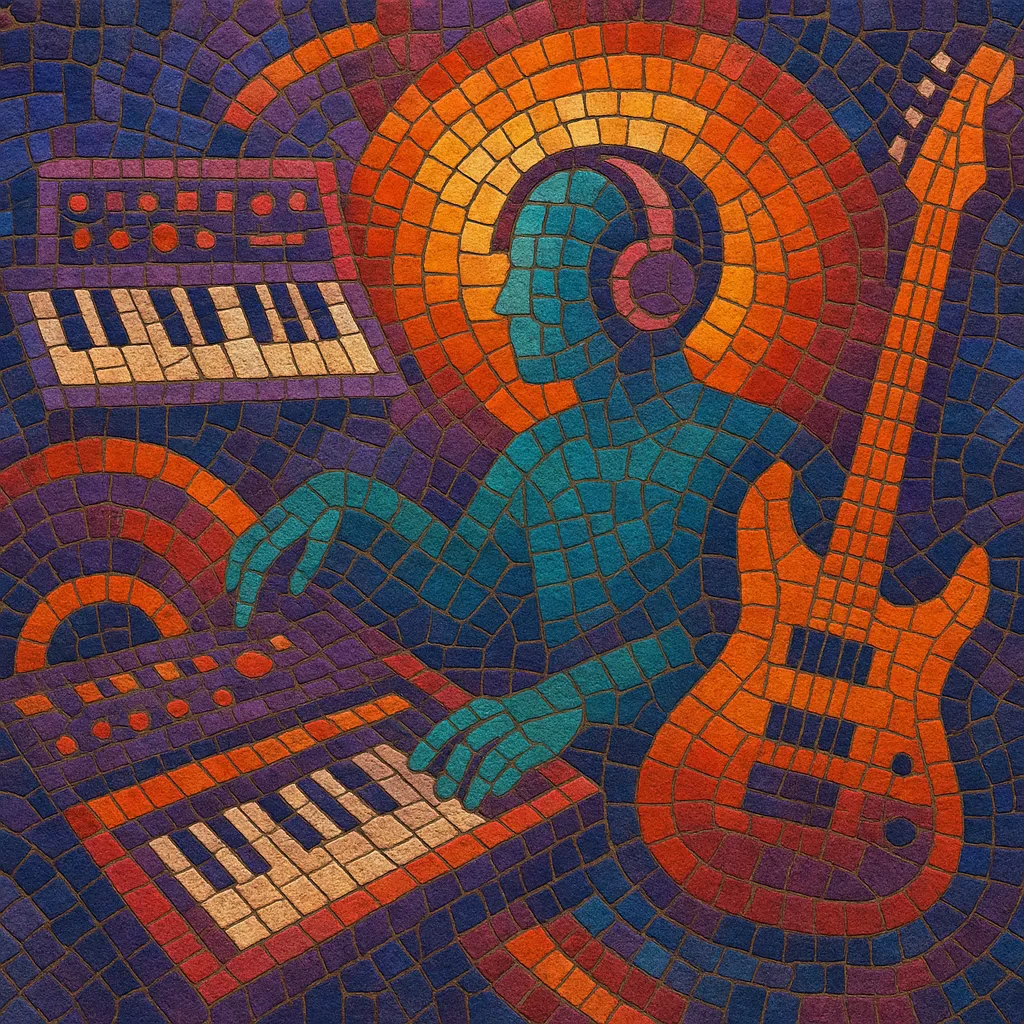Synth funk is a strand of funk and post‑disco that foregrounds electronic instruments—particularly analog and early digital synthesizers, drum machines, and effects—while retaining funk’s syncopated groove and R&B songcraft.
Typically driven by LinnDrum or TR‑808 patterns, rubbery synth bass lines, clipped rhythm guitar, bright stabs, and talkbox/vocoder leads, synth funk balances dance‑floor propulsion with sleek, radio‑ready hooks. It often uses extended seventh and ninth chords, call‑and‑response vocals, and glossy production associated with the early to mid‑1980s.
The style is closely linked to the Minneapolis sound and overlaps with boogie and post‑disco, but it is generally more synth‑forward and machine‑tight than 1970s band‑centered funk. Its influence echoes through new jack swing, G‑funk, and modern retro‑leaning pop and electronic forms.
Synth funk emerged as funk and soul bands absorbed post‑disco production and affordable electronic instruments. Artists began replacing or augmenting live rhythm sections with drum machines (LinnDrum, TR‑808) and polyphonic synths, while keeping funk’s syncopation and R&B song structures. Boogie’s slick dancefloor sensibility and P‑Funk’s electronic experimentation laid crucial groundwork.
The sound crystallized with records that spotlighted synth bass, stabs, talkbox leads, and machine‑precise grooves. The Minneapolis scene—spearheaded by Prince and groups he mentored—pushed a sparse, hard‑edged, and hook‑driven aesthetic. Parallel acts like Zapp, Cameo, Mtume, Kashif, Midnight Star, D‑Train, and The S.O.S. Band delivered club hits that married funk grit to glossy radio production.
As new jack swing and contemporary R&B rose, synth funk’s traits—tight machine rhythms, bright keyboard textures, and punchy bass—flowed directly into mainstream urban pop. In hip hop, especially G‑funk, producers drew on 1980s synth‑funk timbres and grooves. The style later informed synthwave’s 1980s nostalgia and periodic boogie/synth‑funk revivals among modern funk and house‑adjacent scenes.
Use drum machines (LinnDrum, TR‑808/909) or tight sampled kits with dry, punchy kicks, snappy snares/claps, and crisp hi‑hats. Build bass lines with analog‑style monosynths (saw/square waves, light filter drive) and layer poly synth stabs/pads (Juno/Prophet‑style). Add talkbox or vocoder for leads or hooks.
Target 100–115 BPM for danceable but unhurried funk. Program syncopated, on‑the‑one patterns with off‑beat hi‑hats, occasional handclap accents, and sparse but intentional fills. Keep quantization tight, then add micro‑timing nudges or ghost notes for feel.
Favor R&B‑leaning harmony: dominant 7ths, 9ths, sus chords, and chromatic passing tones. Write concise, ear‑catching hooks with call‑and‑response between lead vocal and synth/talkbox. Use short, bright chord stabs to punctuate the groove and pads for pre‑chorus lift.
Craft a rubbery synth‑bass line that locks with the kick, using envelope‑shaped filter movement for funk. Add minimal, percussive rhythm guitar (clean or lightly chorused) to reinforce syncopation without crowding the synths.
Structure around strong choruses with instrumental breakdowns for dancefloor momentum. Employ gated or short room reverbs, slapback delays on stabs, and tasteful chorus on keys/guitars. Keep mixes punchy and center‑focused: kick, snare/clap, and bass up front; vocals and main lead clear; stabs/pads tucked but present.
Lean into themes of romance, nightlife, swagger, and futurist cool. Keep verses economical and let the chorus/talkbox hook carry the identity.


